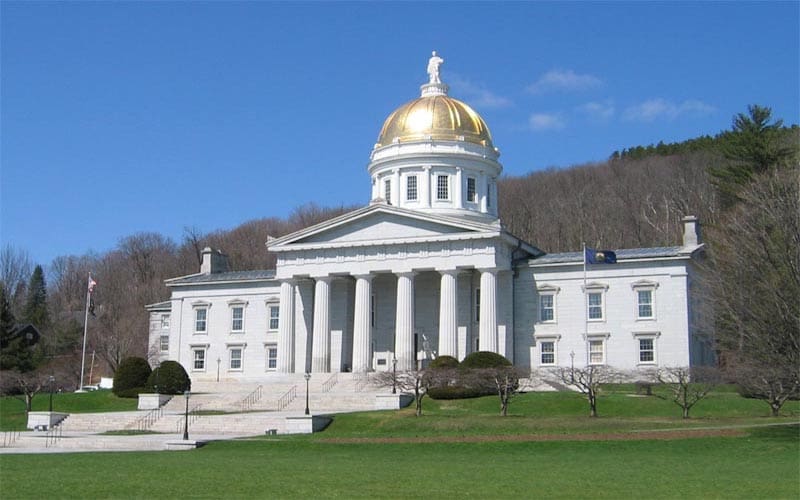
We must hold our government accountable to transparency and honesty when it comes to climate change.
Update 9/24/2024: CLF has formally filed its complaint which initiates a lawsuit against the State’s Agency of Natural Resources.
This piece was originally published as an op-ed in the VTDigger.
On the first anniversary of last July’s catastrophic flooding, Vermonters were caught yet again in another terrifying storm. It dumped more than six inches of rain in some communities, leading to evacuation orders in at least five towns and closing more than 50 state roads. In Hardwick, the fire station and wastewater plant flooded badly, as did the town’s commercial stretch. Many of the same businesses struggling to recover from last year’s flooding were hit again.
The impacts of climate change are here and now, confronting us with devastating regularity. We know how painful the damage is, how it wreaks havoc on our families and businesses and how much it took (and continues to take) to recover.
Scientists are telling us that these next few years are our opportunity to slow the overheating of the planet. This urgency motivated the Vermont General Assembly to pass the Global Warming Solutions Act in 2020, creating the framework for the State to slash our climate-damaging emissions. The near-term objective: reduce emissions to 26% below 2005 levels by 2025 — a decline equivalent to about 1.26 million metric tons of carbon dioxide. Unfortunately, we’re not on track to meet that reduction requirement, but the actions of the secretary of the Agency of Natural Resources would have you believe otherwise.
Here’s the thing: Julie Moore, the secretary of the Agency of Natural Resources, is tasked with ensuring we achieve these legally enforceable emission reduction requirements. She’s supposed to do this in part by conducting periodic “reviews” to determine if her agency needs to adopt additional rules and/or amend rules to meet state obligations. The agency is required to involve the public in these reviews to ensure transparency and solicit input.
One such review period just elapsed on July 1, 2024. While the agency issued a letter by that deadline claiming to be a review determination, it did not satisfy the legal requirements of one. First, it inaccurately predicted the state was closer to achieving its 2025 requirement than it actually is. This is because the version of the model the state relied on for its determination was never meant to be used to decide whether Vermont had reached its emission target. And we believe the agency knew this. The authors included a disclaimer in the report warning the agency not to use the report in this way.
Shockingly, ANR relied on a slightly modified version of the modeling underlying this report again in “Vermont Greenhouse Gas Emissions Inventory and Forecast: 1990 – 2021,” released just this month, which means Vermonters now have two inaccurately optimistic forecasts of the state’s progress toward achieving the 2025 emissions reduction requirement.
The secretary wrote in her July 1 review letter that the State was “generally on track” to meet the 2025 emission reduction target. At base, that statement is inaccurate. Correctly fine-tuning the model would have predicted the state being off track by about 365,000 metric tons of carbon dioxide equivalent. This means the secretary is predicted to cut less than half as much emissions as she is required to by January 2025.
What’s particularly troubling is that the agency knew it shouldn’t have used the model in the way it has without calibrating it to provide a more accurate read on emissions. It also knew how to make those adjustments (whether by itself or through a hired expert) and chose not to.
What does this mean? Sadly, we’ve lost seven months when we could have been developing new rules or passing laws to ensure we achieved the near-term science-based emission reduction objective. It means we’ve delayed action. And that imposes costs on Vermonters. These are costs that families and small businesses will shoulder.
There’s a second problem, too. The state’s so-called “review determination” plainly didn’t engage Vermonters in the process via public hearings, as required. Not only was there not a single public hearing conducted around this determination, but the letter wasn’t posted to the agency’s website or otherwise publicly disseminated.
Vermonters want to believe that our state leaders are acting in the best interests of our families and communities. But that’s hard to do in the face of such knowing misuse of climate models and their shirking of their legal duty to engage the public.
That’s why CLF recently sent a notice of alleged violation to the secretary of the Agency of Natural Resources. Plain and simple, the secretary’s determination does not amount to a review as required by law. It used a version of a model the secretary knew was not intended for this purpose and did not include the public in the process. The climate crisis is crushing Vermont, and we have proof that the Agency of Natural Resources is not doing a core part of its job in the face of that crisis.
There’s a remedy: We’re asking the secretary to properly calibrate its model and re-issue its review determination. We’re also asking the agency to better engage the public in future reviews — whether rule updates are necessary or not — to ensure transparency and accountability.
Because, at the end of the day, we can’t tackle climate change without honest math.



